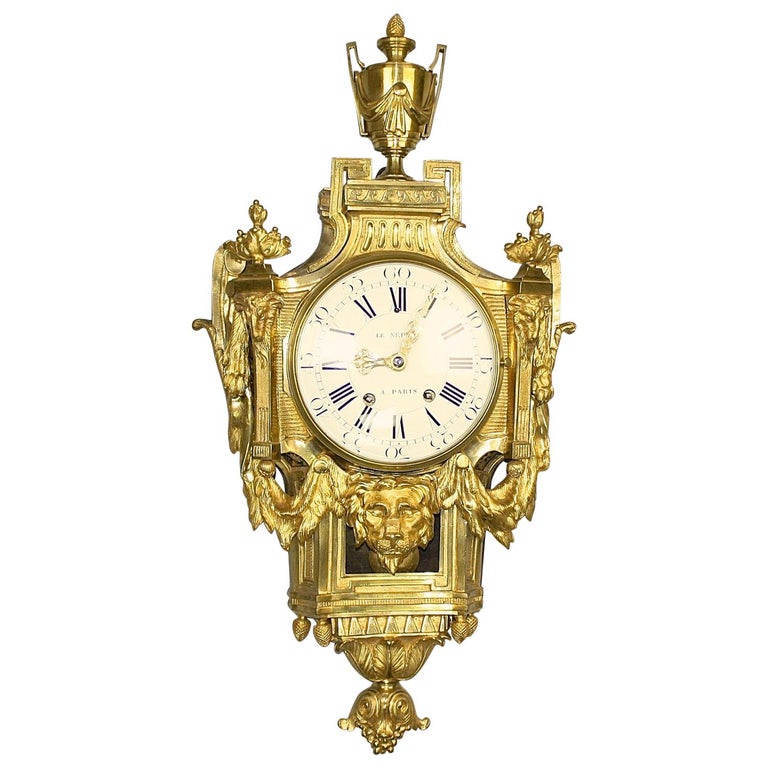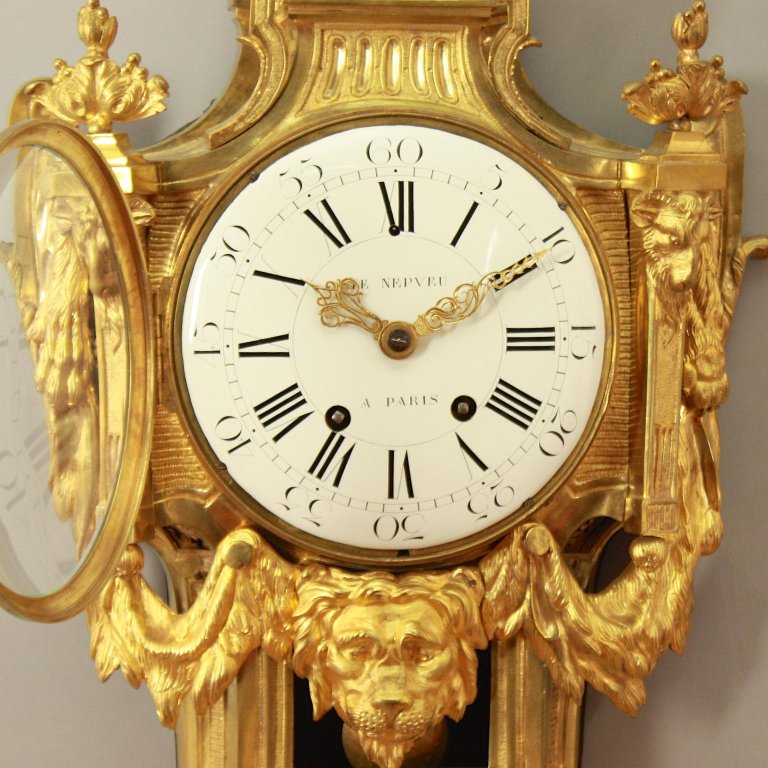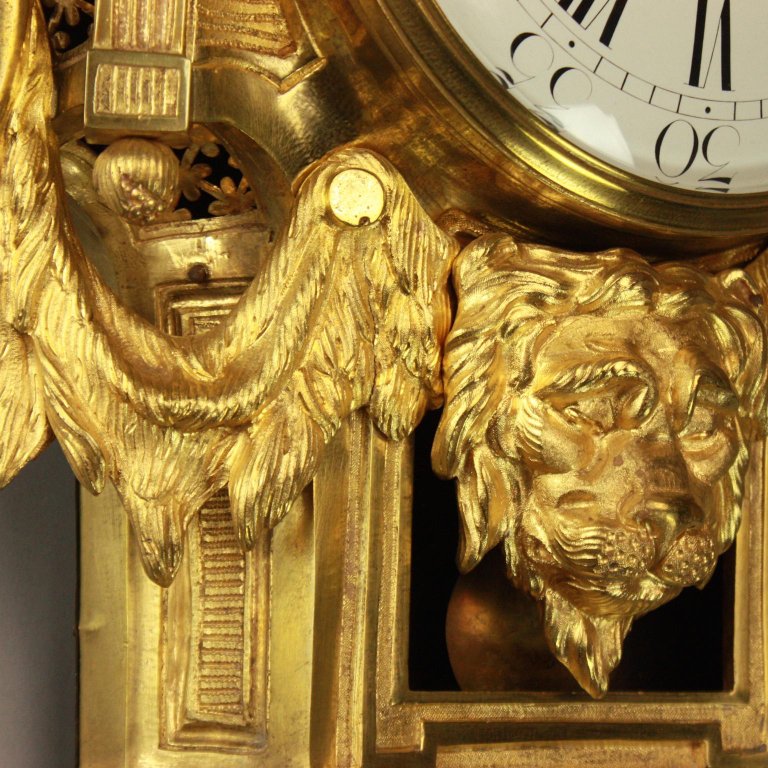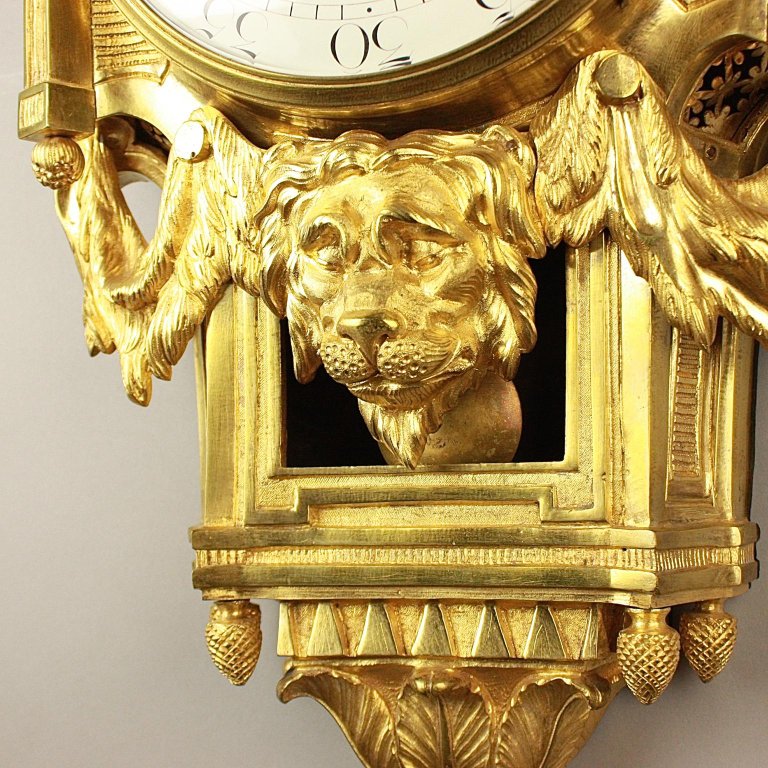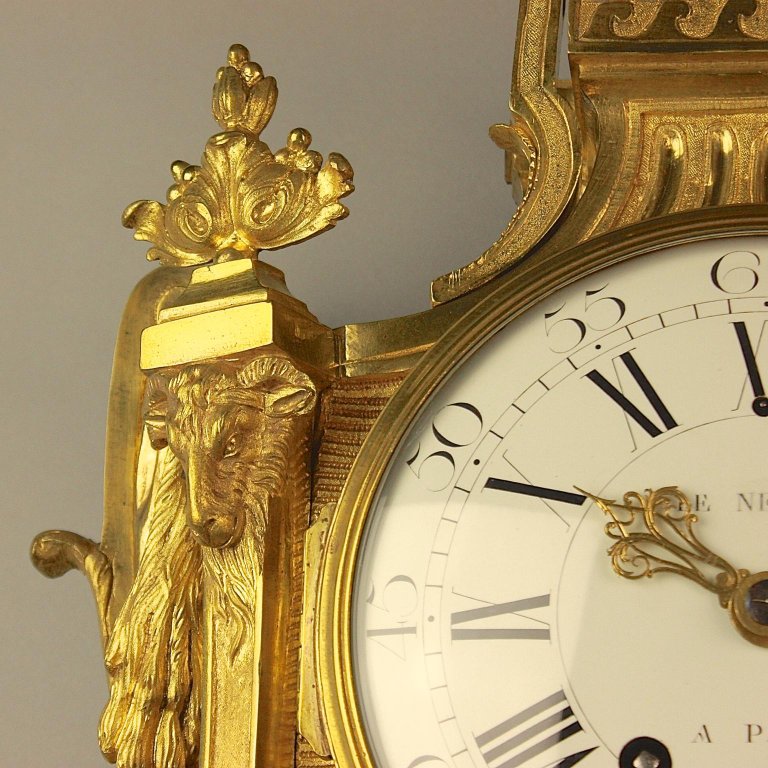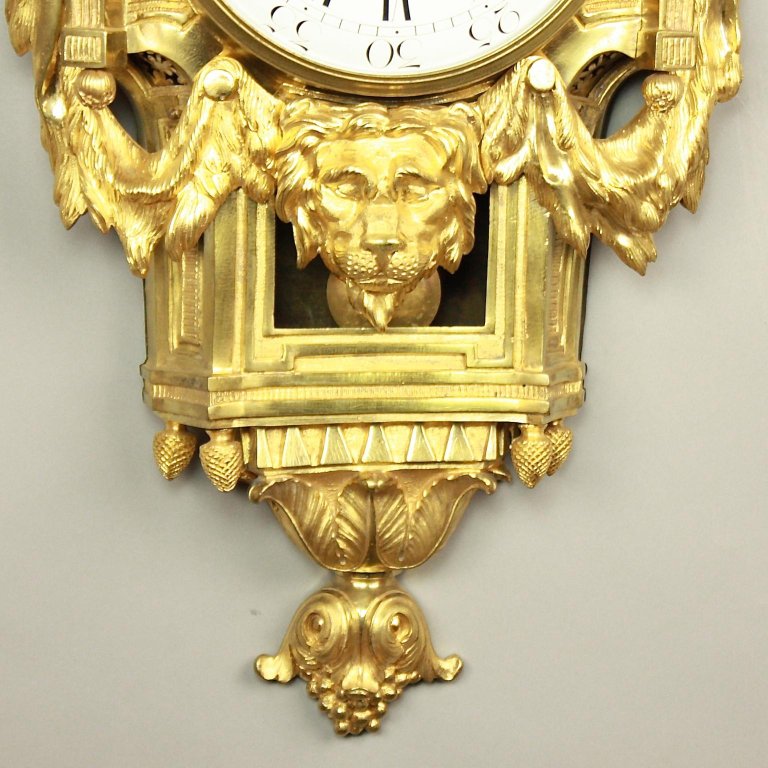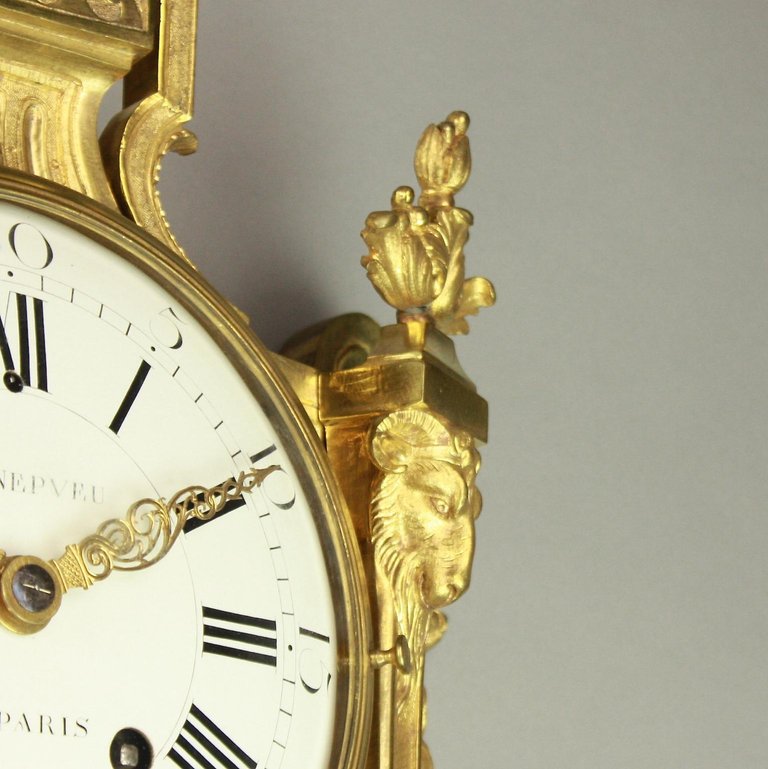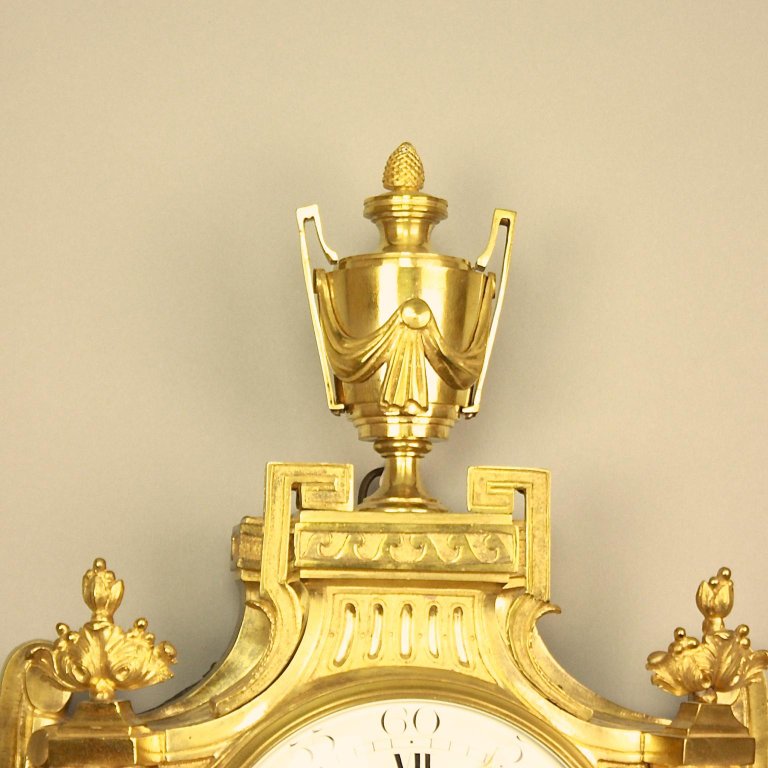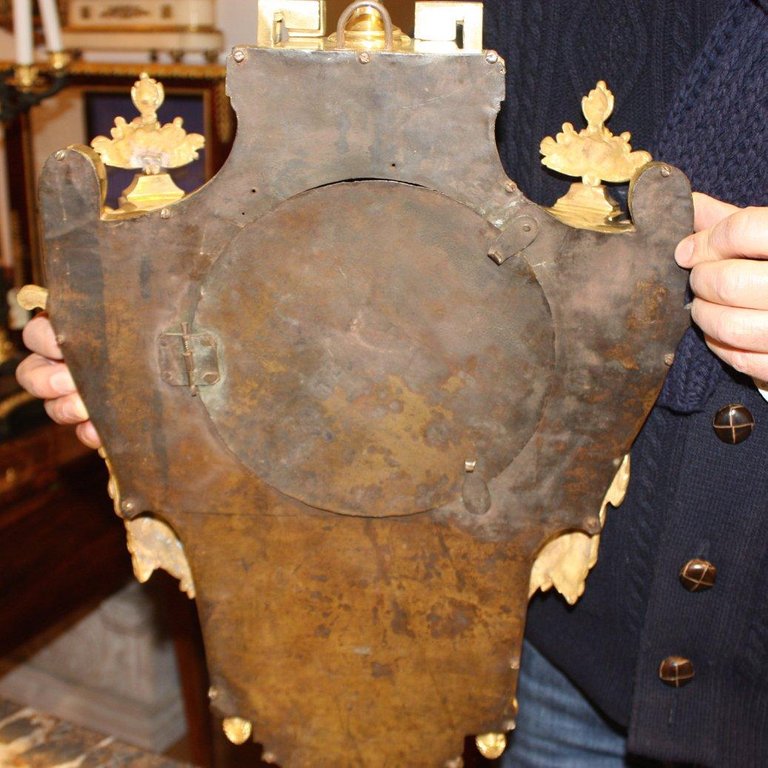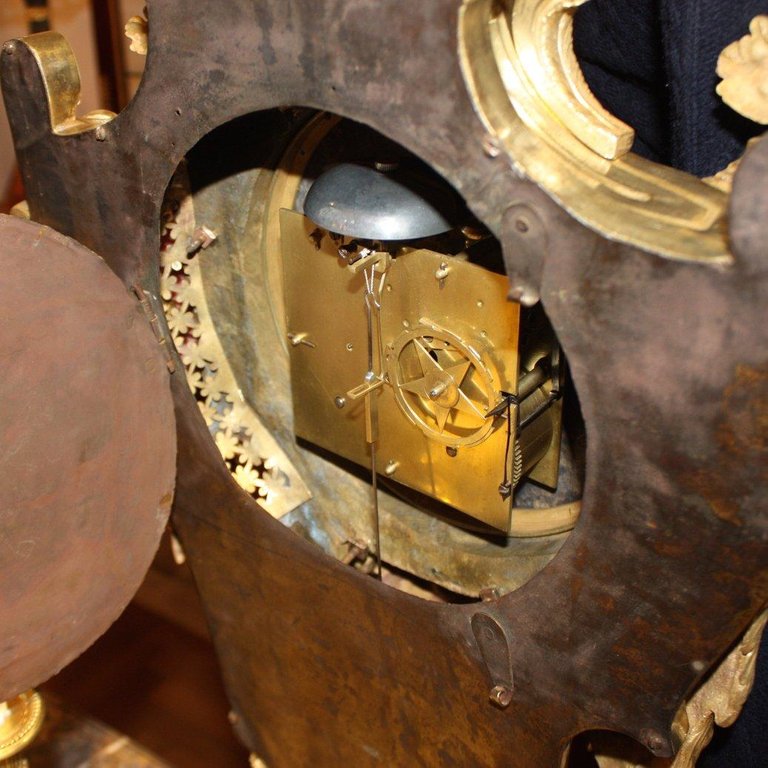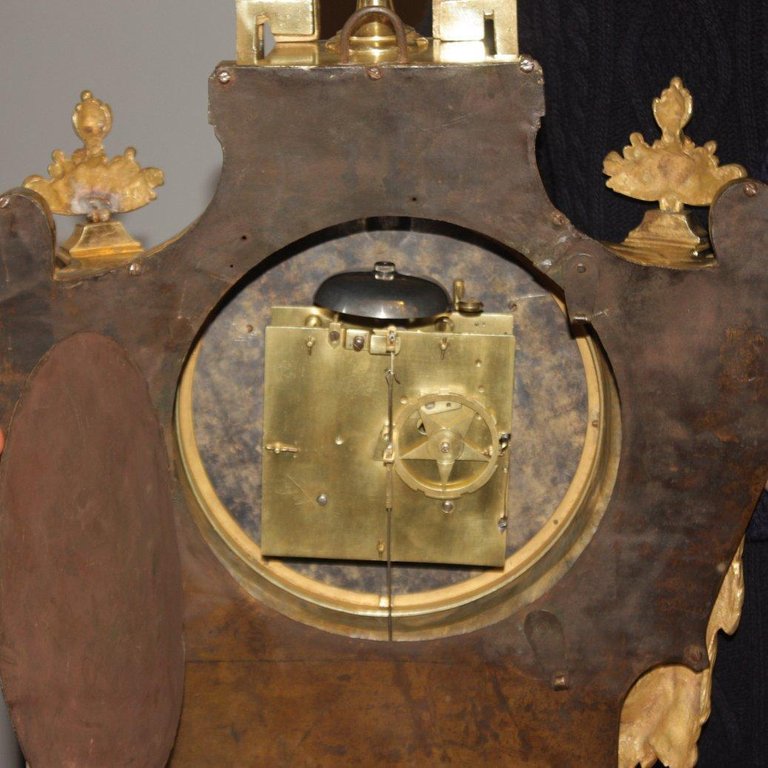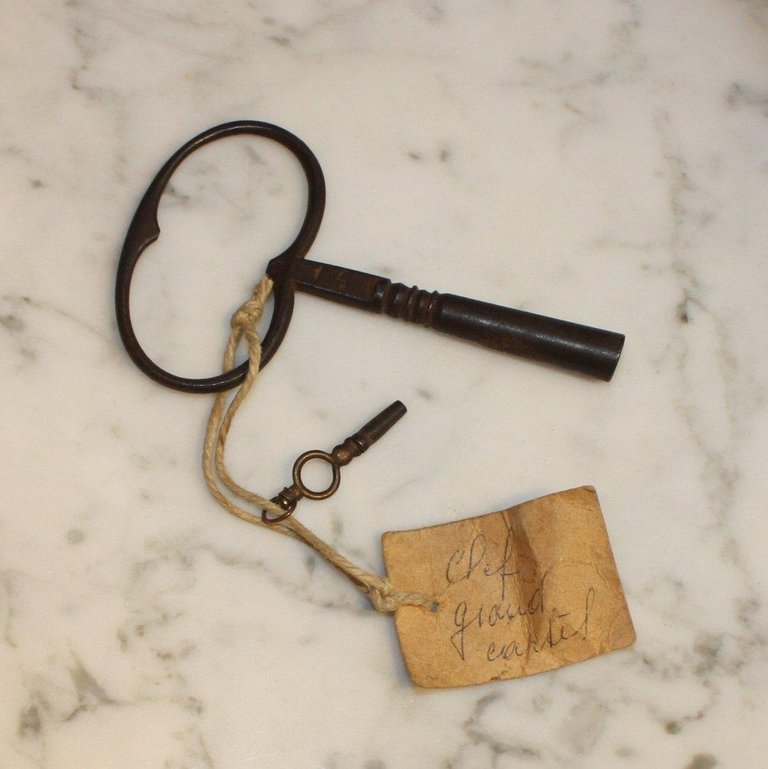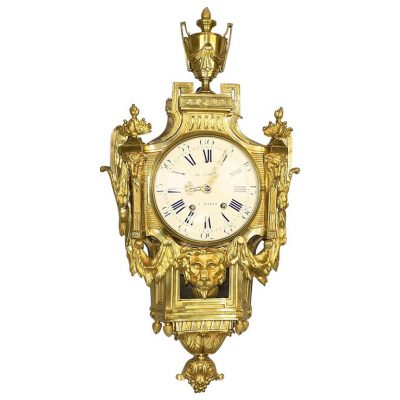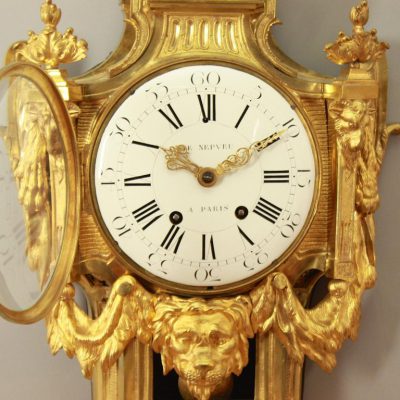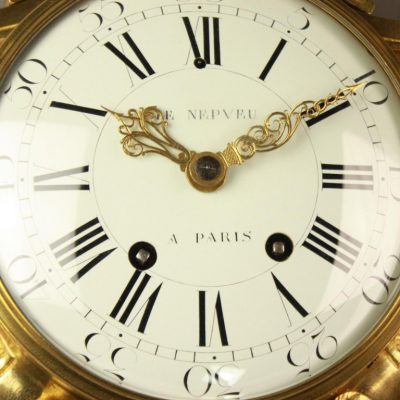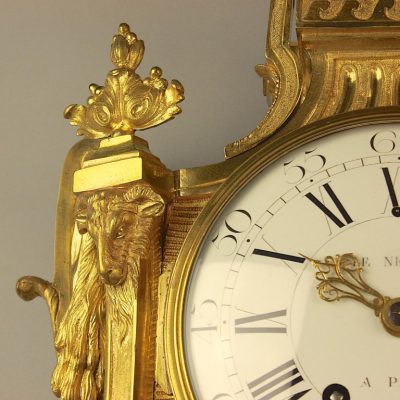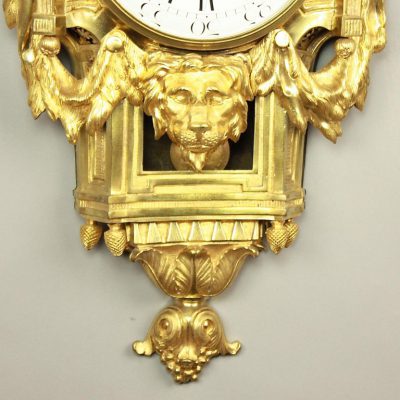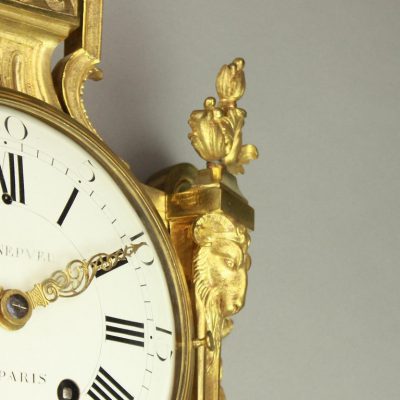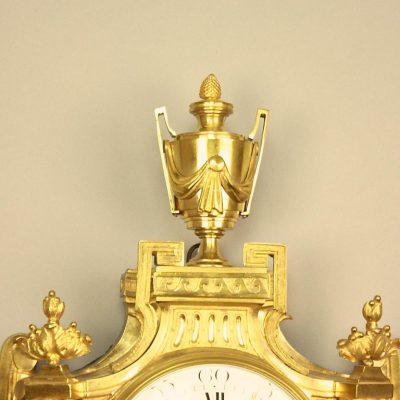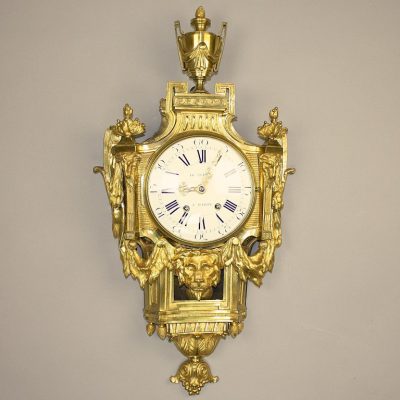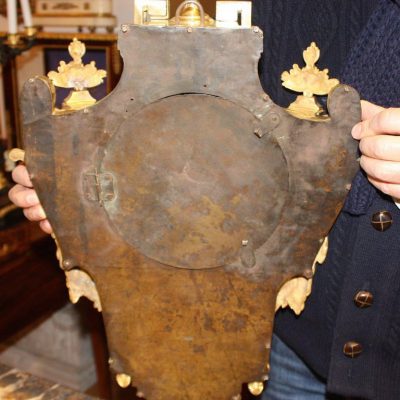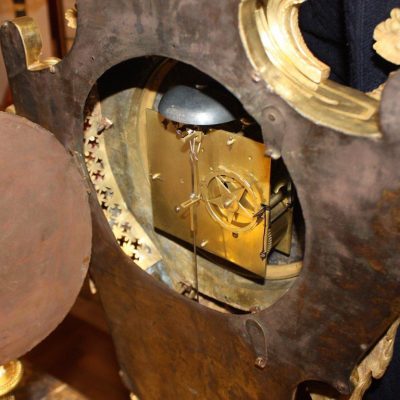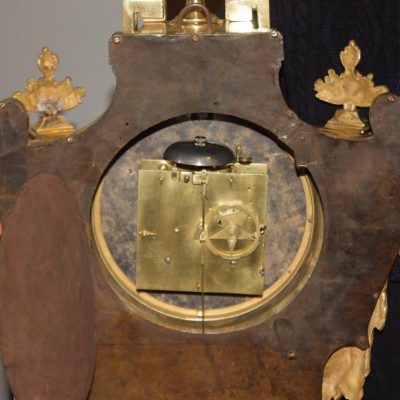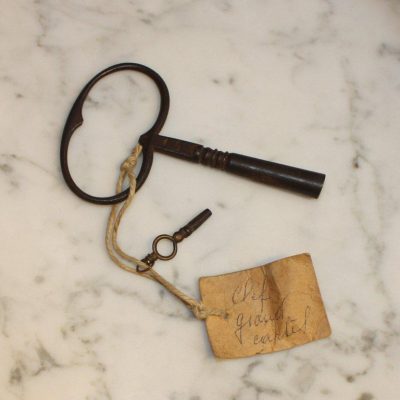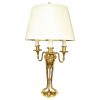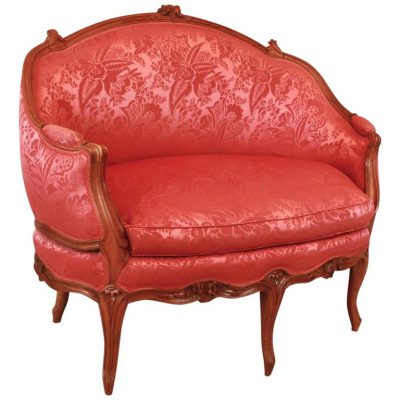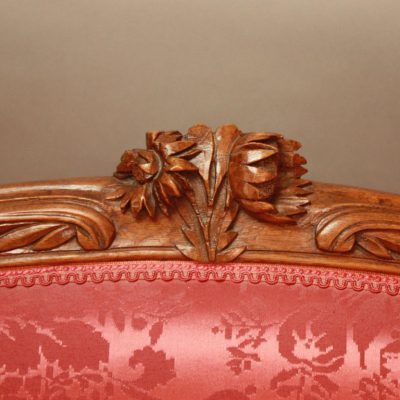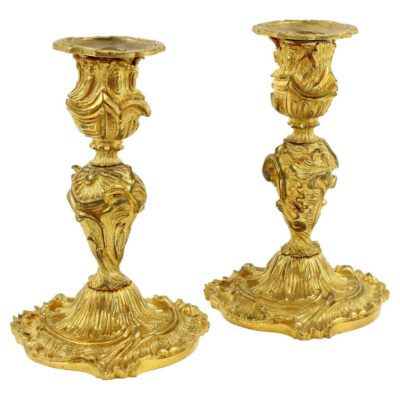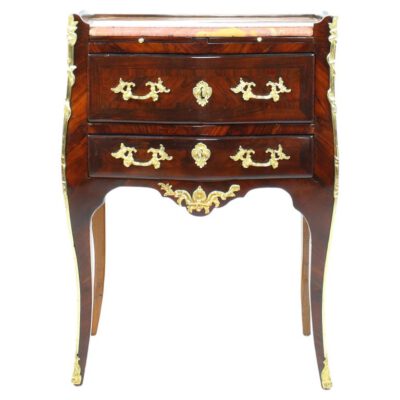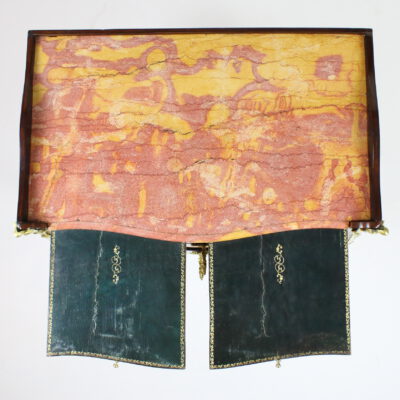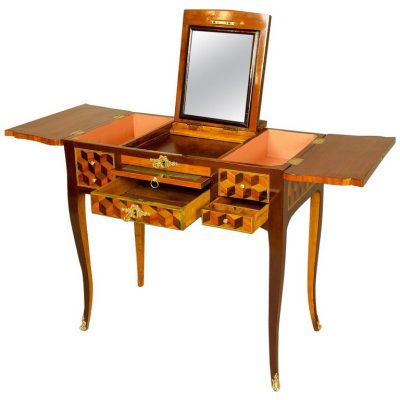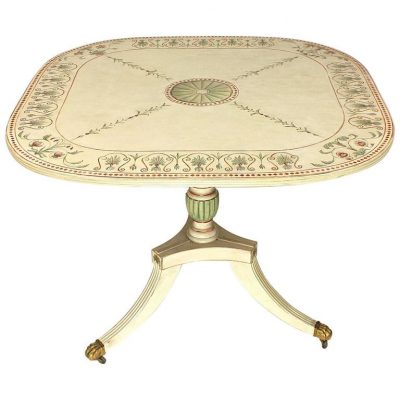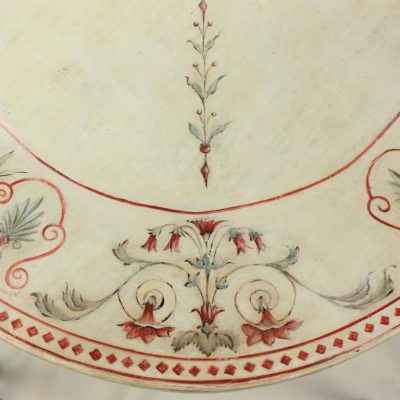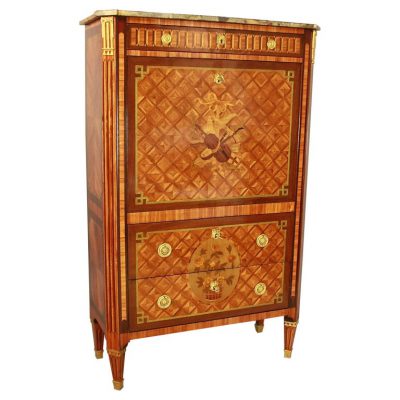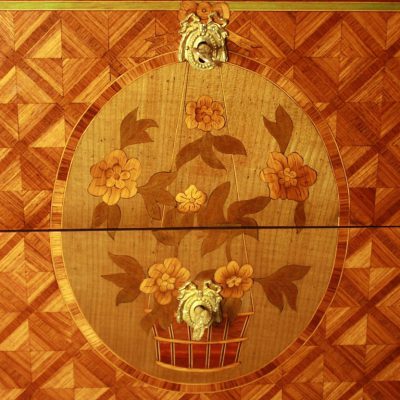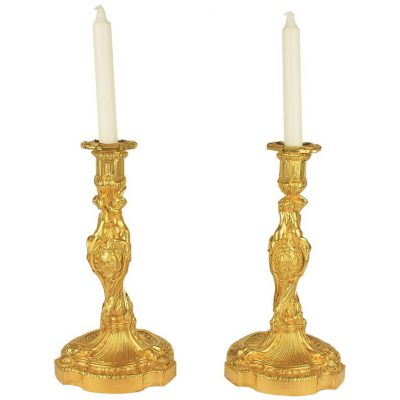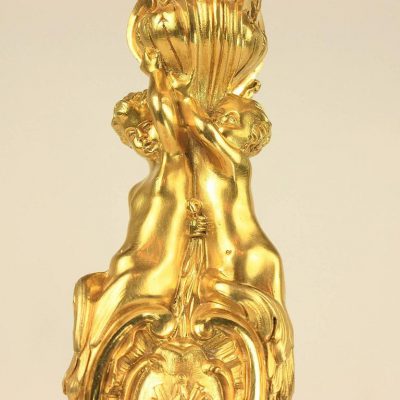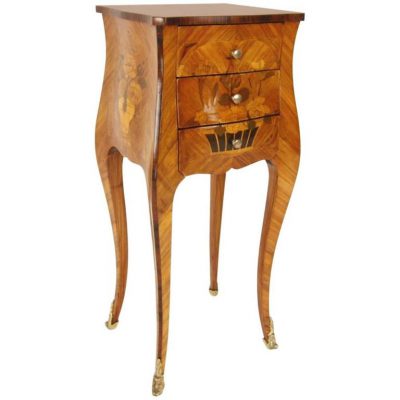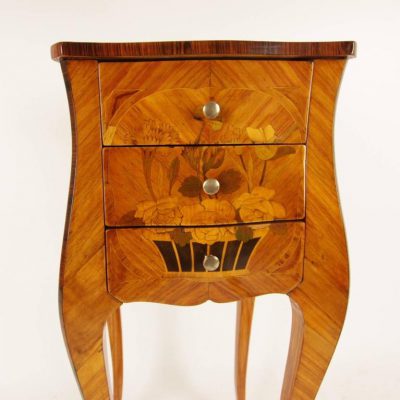An 18th century gilt-bronze Cartel clock with a white enamel dial signed Le Nepveu a Paris, with finely pierced and engraved gilt hands, the Roman and Arabic numerals contained within a cartouche-shaped case with a ‘Vitruvian wave’ frieze surmounted by an classical urn, the sides with tapering pilasters with rams’ masks, the base cast with a lion mask, draped with a lion’s pelt, with guttae and acanthus leaves. Nicolas-Antoine Le Nepveu (1736-1796) supplied clocks as ‘Ouvrier libre’ since 1767 and became accomplished master clockmaker ‘par privilége de l’hopital de la trinité’ in 1773. He worked in the Rue de Salkle au Compte and in the Rue Magloire. The clock movement has an eight-day, spring-driven going train and a count-wheel striking train, striking the hours and half hour on a single bell mounted above. The movement has an anchor escapement with a silk pendelum suspension. The design of this Wall clock is attributed to the Parisian architect, designer, decorator and print maker Jean-Charles Delafosse (1734-91). His designs were widely circulated across France, England, and Germany and had a profound impact in the development of the goût grec (Greek style), an early form of Neoclassicism that emerged around 1760s.
See: Ottomeyer/ Pröschel, Vergoldeted Bronzen, 2 volumes, Volume I, München 1986, No. 3.8.6.

